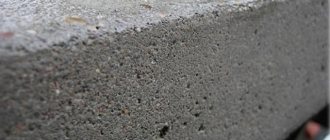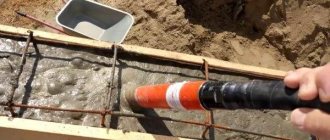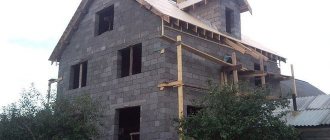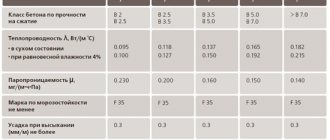September 30, 2021
The road experiences increased traffic loads every day. And there is nothing surprising in the fact that cracks, holes, and chips appear on it. The difficulty is that standard repair methods can only be used in the warm season. And if damage occurs in winter, it is much more difficult to deal with.
This is why cold mix asphalt was developed. This material helps to repair holes, cracks, and other damage at any time of the year, even in frost. We invite you to talk about cold asphalt technology: what it is, what its features are and where it can be used.
Characteristics and applications
The areas of application of this material are determined by its special qualities, which include:
- Available for sale in a form completely ready for creating road surfaces.
- Can be transported in small trucks or truck trunks.
- Long shelf life when prepared. The mixture without containers can be stored for up to 12 months, with correctly selected containers (most often polyethylene) - up to 24 months without loss of performance characteristics.
- Wide range of temperatures at which installation can be carried out: from -15 to +40°C.
- High speed of work, no need to involve heavy equipment and numerous workers.
- Safe to use due to the absence of hot processes.
The main difference between cold asphalt concrete and hot one is the increase in strength as a result not of the cooling of the material heated before laying, but of the evaporation of hydrocarbons contained in its components.
Cold asphalt concrete mixture is used for:
- Carrying out urgent restorative pothole repairs on roads with varying degrees of traffic load, areas near gas stations, car parks in the courtyards of multi-storey buildings. While its hot-laid counterpart requires a carefully prepared dry base, cold asphalt is less demanding on weather conditions and base moisture.
- Waterproofing flat roofs.
- Devices for blind areas from the foundation.
- Asphalting of garden paths and local areas.
- Sealing of bridge and road thermal expansion joints.
- Restoring the coating after installing drainage grates.
Tamping
The effectiveness of the repair, in addition to the quality of the cold asphalt, also depends on well-executed compaction, which is carried out to obtain the required degree of compaction.
The asphalt concrete layer can be effectively compacted using the following types of equipment:
- Hand rollers, which belong to the category of the simplest compacting devices.
- Vibrating plates. Powerful units are ideal for compacting the asphalt layer in large potholes, and for small holes or in confined spaces it is more advisable to use compact vibratory rammers.
Compound.
The composition of cold asphalt is, in fact, not much different from hot asphalt.
The difference lies in the addition of special substances (modifiers) that prevent the bitumen from hardening.
This is very important for using the ready-made mixture.
Thus, a certain plasticity is achieved, allowing the resulting mixture to work for a long time.
Shelf life.
The ready-mixed cold asphalt has a long shelf life of 10 months to 1 year.
When working, no special surface preparation or use of tools and equipment for repairs is required.
Restoration of road surfaces can be carried out in subzero temperatures.
This property allows it to be used in areas with cold climates.
The mixture is made using high-strength fine-grained crushed stone, previously cleaned and subjected to intensive drying.
A mixture of cold asphalt is prepared on special equipment at asphalt concrete plants.
Crushed stone of a certain fraction is mixed in mixers with bitumen added in portions.
The duration of mixing the components of cold asphalt is 20...25 seconds.
Crushed stone fractions are preheated to a certain temperature, but not higher than 100 C.
The volume of bitumen added to the mixture should be from 4.2 to 4.5% of the mass of crushed stone.
When can installation be done?
Cold asphalt has one significant advantage over hot asphalt: it can be laid in any weather and sub-zero temperatures. Typically, mixtures are recommended to be used down to -5°C. But there are varieties that can be laid even at -15°C. This is possible thanks to the plasticizers added to them. It is advisable that the surface of the pit be dry during repairs. Therefore, it is recommended to choose sunny weather for work. If repairs need to be done urgently, the wet bottom and walls can be easily dried with a regular hair dryer. On the other hand, cold asphalt can also be laid during rain and in a hole with some water. Of course, in this case, the adhesion of the asphalt to the walls of the pit is worse, and the service life of the coating is reduced. But this is also an acceptable option, and a little moisture is not a problem. Detailed instructions for repairing potholes with cold asphalt mixture are described below.
Polymerization.
The final technological stage in the production of cold asphalt after mixing crushed stone with bitumen is the addition of a special additive.
The volume of special additive in the production of the mixture is 25...35% of the weight of bitumen.
The amount of additive used in the mixture determines the duration of storage of cold asphalt, while maintaining all its properties.
The additive can be added to the mixture using dosing units that are used for adhesives.
The additive must be supplied to the mixer separately. Mixing the additive directly with bitumen is not permissible.
The mixing time of the mixture is 20...25 seconds, after which the cold asphalt mixture is ready for use.
The use of modifiers allows bitumen to retain its properties without polymerizing for a long time in the open air.
The polymerization process of bitumen begins during work. When exposed to the atmosphere, the polymer substances that formed the protective film are destroyed.
This material is produced using several technologies:
1. Without heating, adding bitumen additives as a binder allows you to produce a mixture without heating; the composition made using this technology gives better adhesion to the surface, even when wet, and does not require cooling after preparation. 2. With heating, in this case the mixture is made using the same technology as hot asphalt. Mineral fillers undergo a drying process and are heated to 110 degrees, then bitumen is added to the mixture, after mixing, the finished composition with a temperature of 105 degrees is sent for cooling to 25 degrees and then packaged in containers for sale. The finished mixture can be stored, depending on storage conditions and the types of bitumen used, from two weeks to six months. At positive temperatures, the mixture can be stored in the open air, outdoors.
Types of cold asphalt
Asphalts, including cold ones, are divided depending on the mass fraction of crushed stone in the mixture:
- If the proportion of crushed stone in the composition is at least half, the asphalt belongs to class A.
- With the amount of crushed stone from 40 to 50 percent, asphalt belongs to class B.
- There is also a composition where there is no crushed stone, sand and stone chips are used as filler, screening out the preparation of crushed stone, this composition is classified as class D. This composition is fragile; its area of application is the construction of various types of paths in gardens and parks.
Can be leveled manually
Manual leveling is possible during the construction of sidewalks, sealing small gaps. But this type of leveling of large areas has a number of serious disadvantages:
- low speed of work;
- the difficulty of creating a uniform layer.
Not used to cover bridges or federal highways with huge traffic loads.
Application
A cold composition is used for pothole repair of road surfaces to prevent further destruction of the road. Repairs are carried out in small areas; it is recommended to lay the mixture over an area of no more than 5 square meters. The lower strength of the mixture compared to traditional asphalt determined its use on roads from categories 3 to 5. Despite the rather high cost, cold asphalt is currently widely used due to its advantages over other types of materials; its areas of application are:
- Producing patching repairs of roads and sites.
- Construction of blind areas and entrances to houses.
- Landscaping.
- Arrangement of road hatches.
- Station platforms, viaducts.
- Various hard-to-reach places on overpasses, eliminating ruts on roads.
- Installation of flat roofs, waterproofing of gutters.
- Installation of floors in garages and workshops.
The breadth of application of the mixture is due to the ease of its use, the absence of the need for special equipment and mechanisms, and the possibility of use in a wide temperature range.
Let's sum it up
Now you know everything about how to use cold asphalt. The composition, which includes liquid bitumen and plasticizers, allows you to achieve the required adhesion even in frosts down to -30 degrees, so the mixture is often used for pothole repairs. Due to the ease of installation and good characteristics, such mixtures are widely used in the design of private home areas: arrangement of playgrounds, driveways, paths, parking lots.
There is no single recipe for cold mixture. Each manufacturer decides for himself in what proportions to combine components and what additives to use.
If you need high-quality durable coating, contact us because we:
- We lay out the materials ourselves. We take on both simple projects in private areas, as well as asphalt paving and repair of state roads.
- We work strictly according to GOST. We make sure that the thickness of the laid material corresponds to what we promise to our client.
We also advise you in detail on all issues and help you draw up an estimate for the project!
Advantages
- For transportation it is not necessary to use specialized transport; small packaging allows the use of any equipment, even cars.
- Possibility of long-term storage; depending on the type of container used, it can be stored for up to two years without loss of properties.
- The ability to ensure the quality of work carried out in a wide range of temperatures; with the correct selection of the mixture, it can be used at sub-zero temperatures, which ensures an extension of the construction season.
- The absence of the need for lengthy preparatory work allows the work to be carried out twice as fast as compared to hot asphalt laying technologies.
- The use of the material cannot lead to injuries, making it easier for workers to comply with safety regulations.
- The use of the mixture, despite the cost, when performing some work is economically attractive for carrying out some work, for example, pothole repair, because there is no need to attract a large number of performers.
- Cold asphalt does not require additional preparation for use; it can be used immediately after delivery.
- Cold asphalt can also be used in winter; the mixture must have a temperature of at least 5 degrees, while hot asphalt requires heating from 80 degrees. The use of hot asphalt is possible until mid-October; in the cold it does not have time to harden, it becomes brittle and will crack.
The disadvantages of the mixture include the cost of asphalt; its use in road construction is too expensive. It should also be taken into account that it does not harden immediately; it should not be used on highways where cars frequently brake. The mixture has less strength and water resistance than hot asphalt, so it is used in the construction of roads with less intense traffic.
Prospects
Cold asphalt is unlikely to be able to compete with traditional hot asphalt for large volumes of construction work due to its physical properties and cost, but it is indispensable for pothole repair of road surfaces, construction of small areas, entrances to houses and garages. If it is necessary to asphalt the driveway in a country house, it is unlikely that it would be advisable to take an asphalt machine, a roller and a team of workers. It will be enough to measure the area, multiply by the thickness and bring cold asphalt in strictly required quantities. In this case, the use of this material can be cheaper than when laying hot asphalt. It should also be taken into account that cold asphalt can be laid in places where it is impossible to lay conventional hot material.
It is not difficult to prepare a site for laying asphalt; the asphalt can be compacted using a hand roller or vibrating plate. The convenience of using the mixture lies in the ability to store it for a long time without losing its qualities. When stored in a plastic container, the mixture can last up to two years. Cold asphalt pavement is durable; mixtures of this type are widely used in many developed countries; in our country this material also has prospects.
Preparation of mixtures
Plant for the production of cold asphalt concrete mixtures
The composition of cold asphalt concrete is calculated using the same methods as hot asphalt concrete mixtures. One feature is that to increase caking values, during long-term storage, the volume of petroleum bitumen is reduced by 10–15%.
The production of cold asphalt is carried out in batch concrete mixing units in two ways:
- With heating of mineral components to 80-110°C.
- Without heating - using bitumen emulsions with modifying additives.
Preparation of the asphalt concrete mixture with preheating and drying of the components occurs in the following sequence:
- Cold mineral aggregates enter the drying drum via a conveyor.
- There they are dried, heated to operating temperature (110°C) and fed into a dispensing device.
- From the dispenser, after weighing is completed, they enter the mixer.
- Next, mineral powder heated to a certain temperature is introduced into the dry mortar mixture.
- Mix all components and add hot bitumen.
- Lastly, modifying additives are introduced to extend the shelf life of the finished material.
- Then the finished asphalt (temperature 95-105°C) is transported to the prepared site and mixed using a front loader, which ensures rapid cooling of the mixture to the recommended values (25°C).
- Next, the resulting loose cold mixture is packed into bags or placed in a dump for long-term storage.
Without heating:
- cold sand and crushed stone are dosed and added to the mixer;
- then add a mineral supplement;
- mix everything thoroughly and add cold modified bitumen emulsion;
- They are mixed for 15–20 minutes and shipped to a dump or packaged in prepared containers.
General information
In its structure, a cold asphalt concrete mixture differs from hot asphalt by the presence in its composition of slow-thickening (MGO or MG) or medium-thickening (SG) road bitumen. The amount of petroleum bitumen, which acts as the main binder, is 4–6%. The viscosity of the bitumen used must correspond to the grades MG70/30 and SG 70/130.
Patent for cold asphalt concrete
The class and viscosity of the material for preparing cold mixtures is selected taking into account the method and planned shelf life:
- in the warehouse in packaged form (plastic bags, etc.);
- in piles - in bulk;
- permissible storage temperature;
- quality of mineral components.
The ability of finished asphalt to remain in a loose state for a long time is explained by the presence of a thin oil-bitumen film on mineral grains, as a result of which the structural bonds in cold asphalt concrete are so weak that even minor forces cause them to collapse.
Road repair with cold compounds
Thanks to this property, ready-made mixtures remain in a technically suitable condition for a long time and are easily laid in a thin layer when constructing or repairing road surfaces. Shelf life may vary from 8 to 12 months.
Aggregates for asphalt concrete
In addition to the binder, cold asphalt concrete includes the following components:
- coarse-grained crushed stone from hard rocks, strength 60–80 MPa, grain size - 5–20 mm (up to 50%);
- sand from crushing screenings;
- mineral powder (up to 20%);
- modifying additives (2–3%).











